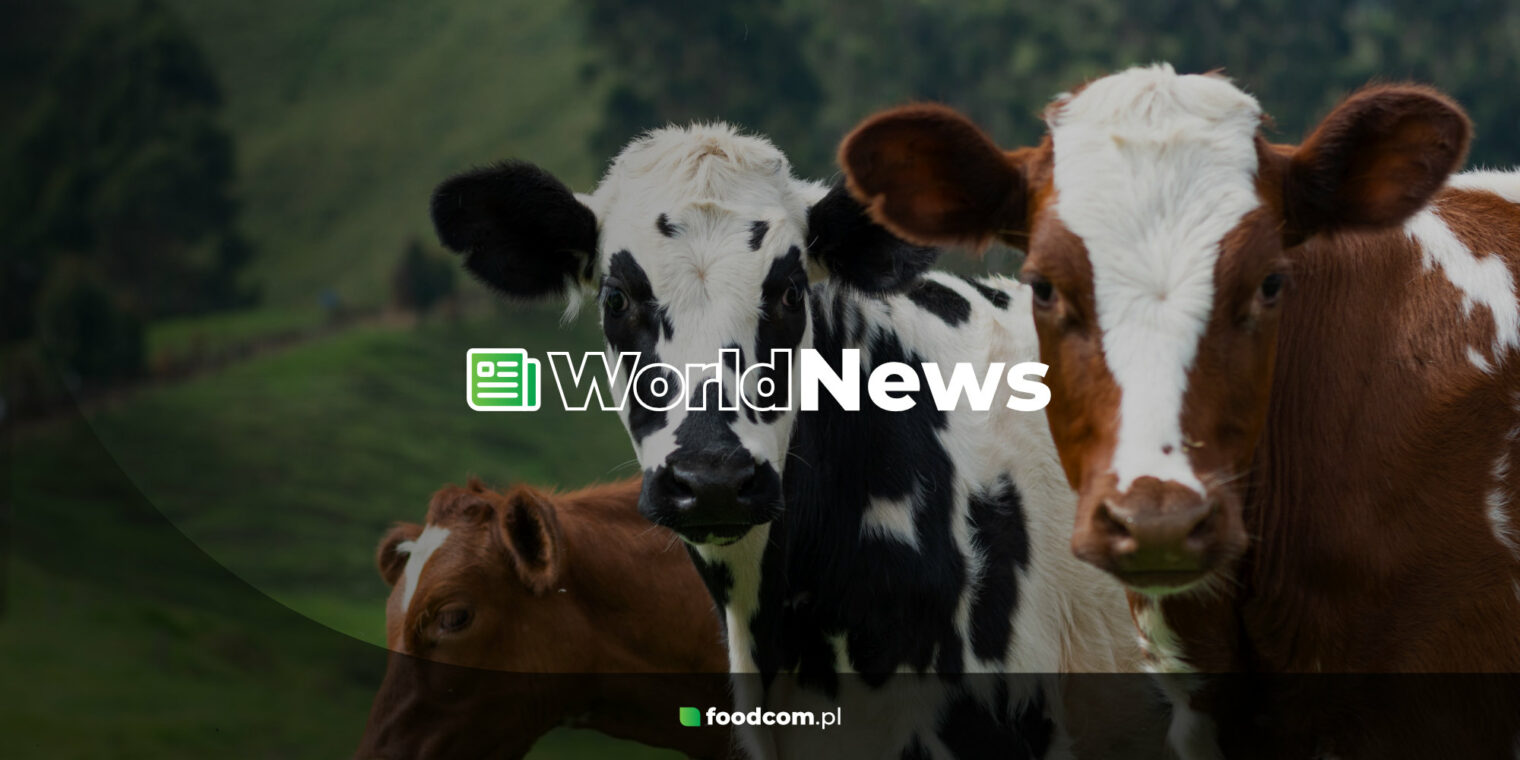Summary
Table of contents
Analyzing the market situation from the first quarter with a view to the coming months can be useful for planning future investments and business decisions. Take a look at butter exports and imports to third countries. Learn about the import trends of cheese and their origins, main destinations of SMP and WMP.
With us, you’ll never miss a thing!
Between January and March 2022, the EU exported 5% less butter to third countries than at this time last year. The exports fluctuated around 15000 tons and were slightly higher in February. The overall situation can be considered stable, but not as high as in Q1 of the previous year. The main destination for butter exports was still the United States of America, which purchased over 7 thousand tons from the European Union. The largest partner for the USA was Ireland, whereas this has not changed in comparison to last year. Exports to Switzerland, Malaysia, and Egypt had increased significantly, and this trend is likely to continue this year. In the case of Indonesia, we saw an upturn, with an increase of almost 123% from 2021 to the first three months of 2022. Exports to South Korea reached 3 202 tons. The vast majority of butter there came from Ireland.
The main countries of origin of EU butter imports
Looking at butter imports from third countries, we could see a slight decrease from 2018 and 2019 (38000 and 47000 tons) to 2020 and 2021 (28000 each). Further decline in volume of butter imports with temporary seasonal peak in February. For Q1 we did not see imports from New Zealand, Israel or Serbia, but downward trends were seen in the case of Ukraine (by 63%), the US (77%) and Iceland (86%). Given the fact that Iceland saw a sharp increase in imports last year, we can assume that the situation is now returning to its previous state. Imports from the United Kingdom rose to 35%. Overall, imports fell by 66% (excluding the UK).
Overall, cheese exports do not change significantly year-on-year. We could say that the market situation is quite stable and quite immune to fluctuations regardless of the season or the economic situation. The first quarter of 2022 began with a 13% increase in cheese exports to the United States and a 17% increase to Libya. However, the largest volumes were exported to the United Kingdom (60 488 tons). Due to difficulties in exporting and importing goods from Ukraine, this country recorded the largest percentage decrease compared to previous years (minus 27%). Although, the situation is better than for butter exports – the total decrease is about 2%. Most of the exported cheese was of Irish origin.
For cheese imports to the EU, over the years distinguished increases in 2019 (19 000 to 212 000) and then another upsurge in 2020 (223 thousand tonnes). This year started with almost 200 thousand tonnes, excluding UK data. Cheese imports are down three percent compared to previous years. In regard to the first few months, imports of this product into Canada have increased sharply, by 165%. Further, imports from Turkey increased by 15%, Serbia by 13%, along with cheese of British origin rose by over 18k tons.
If we look at exports of SMP from year to year, we can see slight inconsistency in both directions. In recent years, the last low point was reached only in 2016, and 2019 was the year we notice the highest values – 945 thousand tons. In 2022, we could see a seasonal drop in exports in February, and a recovery in March. However, compared to 2021, export values have decreased significantly and varied between 45 to 50 thousand tons, that is with a decrease of 22%. Nonetheless, the main export destinations for this product were still China, Indonesia, Algeria and Egypt, but the values still had dropped – by 32% in the case of China, 41% when it comes to Algeria. Interestingly, we observe a sudden increase in exports to Morocco (155%). Most of the exported SMP for Q1 is of Belgian, Finnish and Polish origin. China usually imported from Finland, while Indonesia ordered from Belgium.
In recent years, exports of WMP have ranged from 300 000 to 400 000 tons, with the highest rates recorded in 2017. In the previous year, exports reached 298000, which was the lowest value in several years. Also, if we look at the first three months of this year, we notice a further downward trend – a decrease of 15% compared to the period in 2021. Analyzing the exports of WMP from year to year, we can conclude that most of WMP in the first quarter this year had been from Germany and Sweden, and sold mainly to Oman. The Netherlands prevailed when it came to exporting WMP to third countries such as China, Cameroon, and Kuwait. The first quarter brought an overall 15% reduction in exports. Nigeria had the largest drop (67%) and Angola the largest increase (95%). WMP exports totaled 63 000 qty tons.
Source: Eurostat (COMEXT)
With us, you’ll never miss a thing!
Butter
Main destinations of EU butter exports
Between January and March 2022, the EU exported 5% less butter to third countries than at this time last year. The exports fluctuated around 15000 tons and were slightly higher in February. The overall situation can be considered stable, but not as high as in Q1 of the previous year. The main destination for butter exports was still the United States of America, which purchased over 7 thousand tons from the European Union. The largest partner for the USA was Ireland, whereas this has not changed in comparison to last year. Exports to Switzerland, Malaysia, and Egypt had increased significantly, and this trend is likely to continue this year. In the case of Indonesia, we saw an upturn, with an increase of almost 123% from 2021 to the first three months of 2022. Exports to South Korea reached 3 202 tons. The vast majority of butter there came from Ireland.
The main countries of origin of EU butter imports
Looking at butter imports from third countries, we could see a slight decrease from 2018 and 2019 (38000 and 47000 tons) to 2020 and 2021 (28000 each). Further decline in volume of butter imports with temporary seasonal peak in February. For Q1 we did not see imports from New Zealand, Israel or Serbia, but downward trends were seen in the case of Ukraine (by 63%), the US (77%) and Iceland (86%). Given the fact that Iceland saw a sharp increase in imports last year, we can assume that the situation is now returning to its previous state. Imports from the United Kingdom rose to 35%. Overall, imports fell by 66% (excluding the UK).
Cheese
Main Destinations of EU’s Cheese Exports
Overall, cheese exports do not change significantly year-on-year. We could say that the market situation is quite stable and quite immune to fluctuations regardless of the season or the economic situation. The first quarter of 2022 began with a 13% increase in cheese exports to the United States and a 17% increase to Libya. However, the largest volumes were exported to the United Kingdom (60 488 tons). Due to difficulties in exporting and importing goods from Ukraine, this country recorded the largest percentage decrease compared to previous years (minus 27%). Although, the situation is better than for butter exports – the total decrease is about 2%. Most of the exported cheese was of Irish origin.
Main Origins of EU’s Cheese Imports
For cheese imports to the EU, over the years distinguished increases in 2019 (19 000 to 212 000) and then another upsurge in 2020 (223 thousand tonnes). This year started with almost 200 thousand tonnes, excluding UK data. Cheese imports are down three percent compared to previous years. In regard to the first few months, imports of this product into Canada have increased sharply, by 165%. Further, imports from Turkey increased by 15%, Serbia by 13%, along with cheese of British origin rose by over 18k tons.
SMP
Main Destinations of EU’s SMP Exports
If we look at exports of SMP from year to year, we can see slight inconsistency in both directions. In recent years, the last low point was reached only in 2016, and 2019 was the year we notice the highest values – 945 thousand tons. In 2022, we could see a seasonal drop in exports in February, and a recovery in March. However, compared to 2021, export values have decreased significantly and varied between 45 to 50 thousand tons, that is with a decrease of 22%. Nonetheless, the main export destinations for this product were still China, Indonesia, Algeria and Egypt, but the values still had dropped – by 32% in the case of China, 41% when it comes to Algeria. Interestingly, we observe a sudden increase in exports to Morocco (155%). Most of the exported SMP for Q1 is of Belgian, Finnish and Polish origin. China usually imported from Finland, while Indonesia ordered from Belgium.
WMP (FCMP)
Main Destinations of EU’s WMP Exports
In recent years, exports of WMP have ranged from 300 000 to 400 000 tons, with the highest rates recorded in 2017. In the previous year, exports reached 298000, which was the lowest value in several years. Also, if we look at the first three months of this year, we notice a further downward trend – a decrease of 15% compared to the period in 2021. Analyzing the exports of WMP from year to year, we can conclude that most of WMP in the first quarter this year had been from Germany and Sweden, and sold mainly to Oman. The Netherlands prevailed when it came to exporting WMP to third countries such as China, Cameroon, and Kuwait. The first quarter brought an overall 15% reduction in exports. Nigeria had the largest drop (67%) and Angola the largest increase (95%). WMP exports totaled 63 000 qty tons.
Source: Eurostat (COMEXT)
Categories:



![Amino Acids market review 2025 [Global Report] Amino Acids market review 2025 [Global Report]](https://foodcom.pl/wp-content/uploads/2023/09/Foodcom_Global_Report_Amino_Acids-300x150.jpg)




